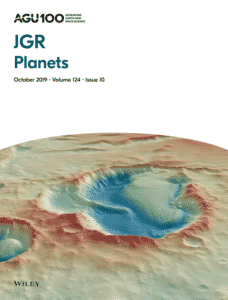B. L. Carrier W. J. Abbey L. W. Beegle R. Bhartia Y. Liu… – Advancing Earth and Space Science. 16 September 2019
Abstract
The effects of radiation on the survivability of key biosignatures are a driving factor in exploration strategies throughout the solar system. Ultraviolet (UV) radiation, especially shorter wavelength UVC radiation, is known to be damaging to organisms and to potential organic biosignatures; however, the interaction of UV radiation with minerals and rocks is not well understood. Constraining the survivability of organics and generation of habitable zones requires assessment of physical parameters such as penetration depth of UV photons. This type of information helps to identify to what extent rocks and minerals can provide effective shielding against UV radiation and is especially important on Mars, where the surface chemistry is more oxidizing, and the radiation environment is more extreme than on Earth. Using pressed pellets of natural gypsum, kaolinite, Mars simulant basalt, and welded tuff, we measured the spectral transmittance of each in the wavelength range of 220–400 nm. Although transmittance drops off quickly with depth, detectable levels of UV can penetrate >500 μm in each material. Each substrate allowed higher transmittance of UVC radiation than of longer wavelength UVA/B radiation, possibly as a result of surface reflectance and internal scattering properties. This could result in increased subsurface photolysis of organic compounds and biosignatures. We have used the transmittance data collected herein to constrain the lifetimes of several organic molecules in the Martian subsurface. These results will also have implications for organic analyses to be conducted by Mars 2020 and could be used to better constrain the SHERLOC/Mars 2020 interrogation volume.

.. Each pellet was placed directly on the StellarNet CR2 UV-Vis-NIR cosine receptor connected to the spectrometer by …





